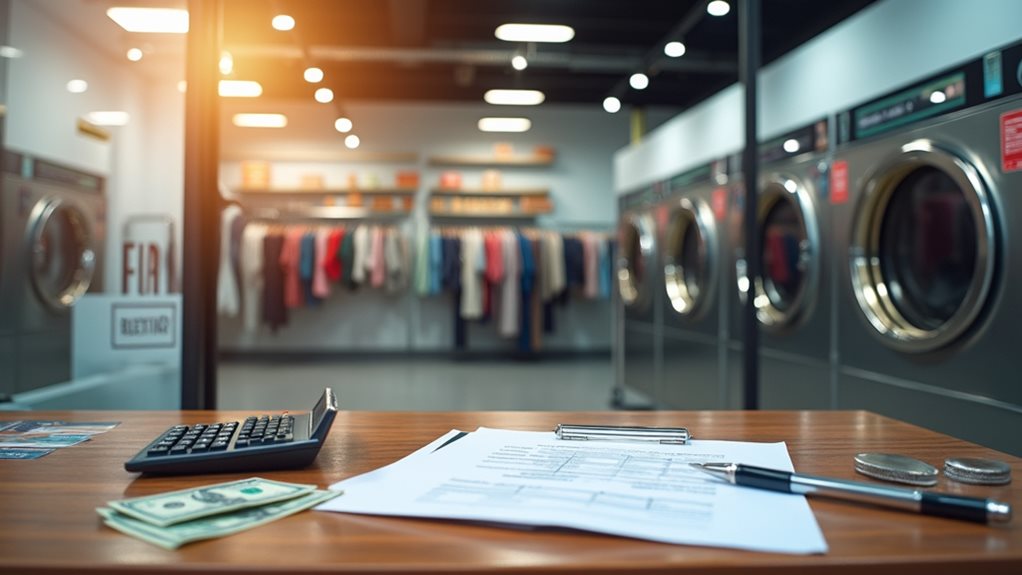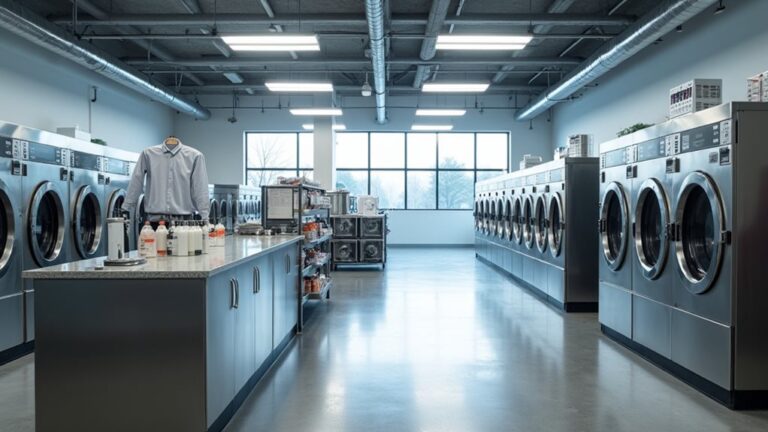You’ll need between $50,000 and $200,000 to start your dry cleaning business, depending on your location and equipment choices. The biggest chunks go toward commercial machines ($15,000-$70,000), monthly rent ($2,500-$9,000), and initial payroll ($12,000-$25,000). Don’t forget licensing fees, insurance costs, and that vital emergency fund covering three to six months of expenses. While these numbers might seem intimidating, successful operations typically see 15-25% profit margins, and there’s much more strategy behind maximizing your investment.
Initial Investment Breakdown for Dry Cleaning Equipment and Supplies
The financial reality of launching a dry cleaning business hits differently when you’re staring at equipment catalogs for the first time, and honestly, I remember feeling a bit overwhelmed by the sheer range of costs involved.
Equipment catalogs reveal the overwhelming financial reality that hits every first-time dry cleaning business owner hard.
Your initial investment for dry cleaning equipment will likely become your largest startup costs, with commercial dry cleaning machines ranging from $15,000 to $70,000 depending on capacity and features.
Crucial equipment like pressing equipment adds another $3,000 to $8,000, while laundry machines for wash-and-fold services contribute $2,000 to $10,000 to your budget.
Don’t forget conveyor systems ($1,000-$5,000) and a reliable POS system ($1,000-$3,000) – these smaller investments guarantee your high-quality dry cleaning operation functions seamlessly from day one.
Your equipment costs will represent just one portion of the overall $50,000 to $150,000 range for commercial-grade equipment that most dry cleaning businesses require to operate professionally.
Commercial Property Costs and Location Expenses
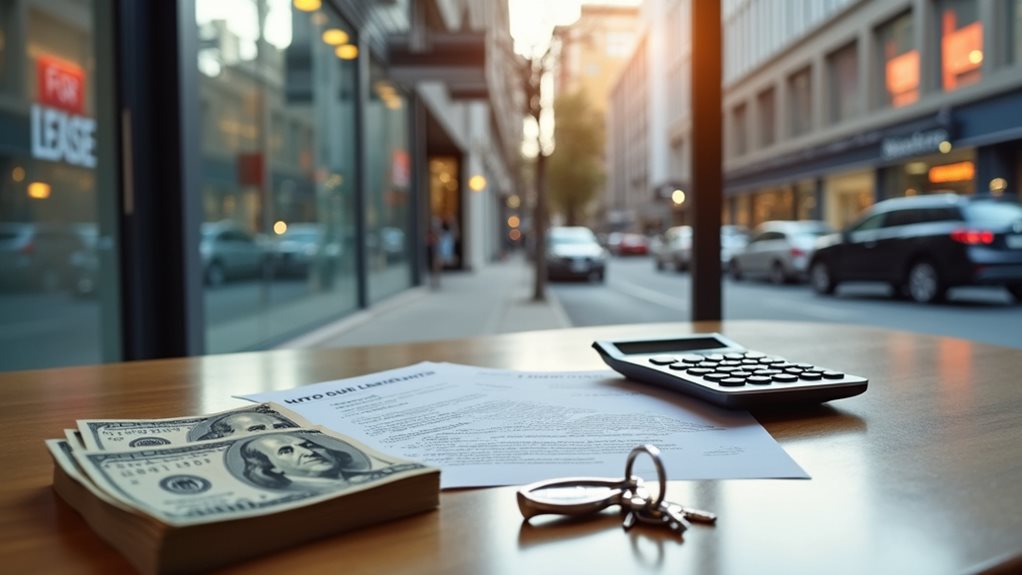
Beyond those equipment investments, your next major financial hurdle involves securing the perfect location, and I’ll be honest—this part of the process taught me more about real estate than I ever wanted to know 😅.
Commercial property costs will likely become your largest ongoing operational costs, and understanding these location expenses upfront prevents painful surprises later.
Here’s what you’ll face when renting a commercial space:
- Monthly rent ranging $2,500-$9,000 depending on your market and square footage needs
- Initial expenses including security deposits plus first month’s rent adding several thousand to startup costs
- Property taxes between 3-12% annually if you’re purchasing instead of renting
- Renovation costs at 10-15% of purchase price for customizing your space
Smart financial planning means budgeting conservatively for these property value fluctuations.
Location choice significantly impacts your startup costs, with urban locations like major metropolitan areas requiring substantially higher initial investments due to premium real estate costs compared to smaller cities that offer more affordable entry points.
Staffing Requirements and Payroll Considerations
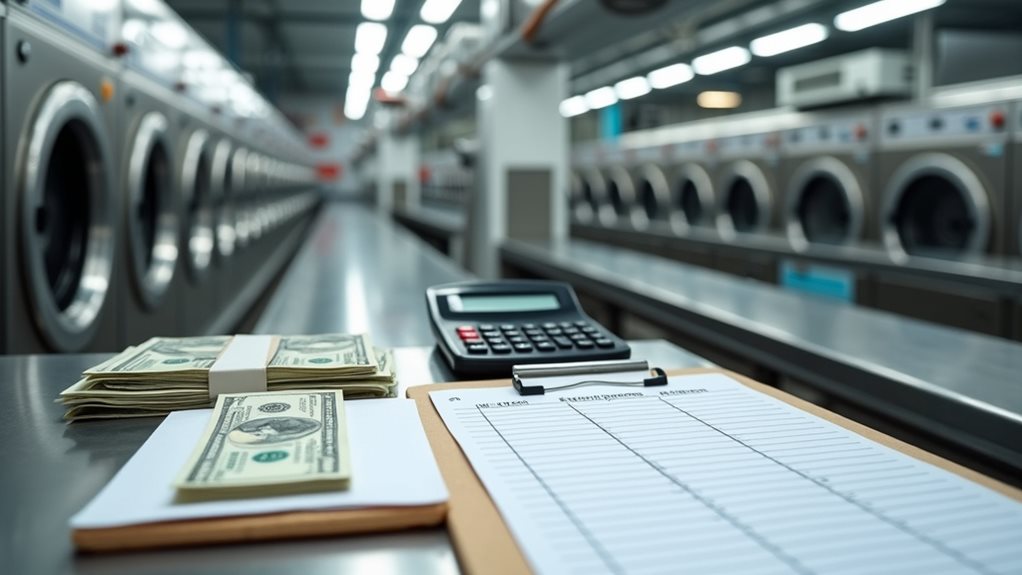
While securing your location feels like conquering Mount Everest, hiring the right team honestly made me question whether I’d accidentally signed up to become a human resources expert instead of a dry cleaning owner 😅.
Your staffing needs will typically include skilled dry cleaners, customer service representatives, and garment handling assistants, with initial payroll costs ranging from $12,000 to $25,000 monthly.
Building your dry cleaning dream team will cost you $12,000 to $25,000 monthly in payroll—no pressure there!
When developing your thorough business plan, you’ll need to align employee compensation with your financial goals while considering the scale of your operations.
I can’t stress enough how essential it’s to establish an emergency fund covering three to six months of operating expenses, roughly $15,000 to $75,000, because those initial cash flow fluctuations will test your patience and wallet simultaneously.
Keep in mind that successful dry cleaning operations typically achieve profit margins of 15% to 25%, which means your staffing investments should be carefully balanced against your revenue projections to maintain healthy profitability.
Licensing, Insurance, and Professional Service Fees
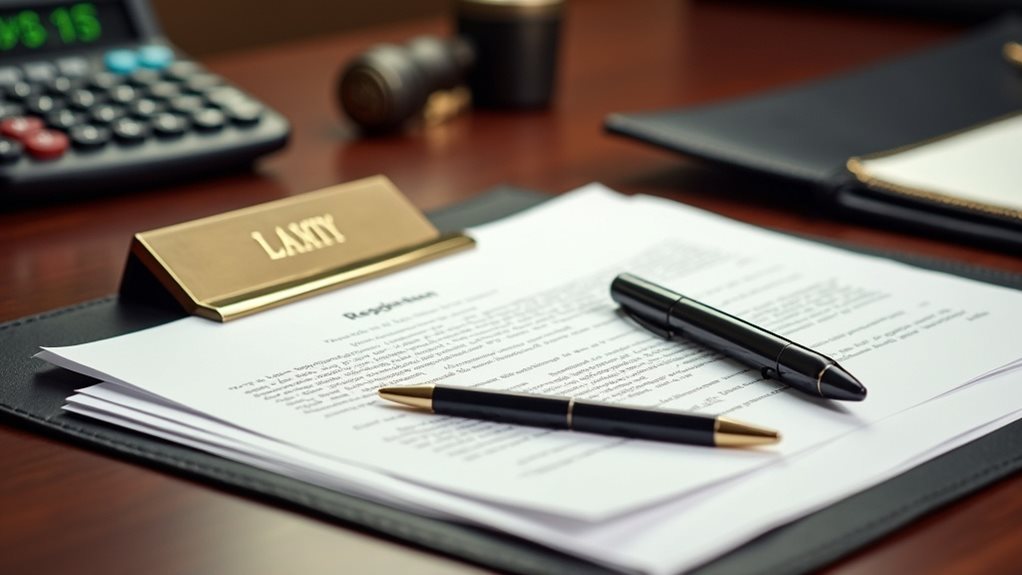
After sorting through payroll complexities, you’ll discover that maneuvering the maze of licensing requirements, insurance policies, and professional service fees feels remarkably similar to assembling IKEA furniture without instructions—technically possible, but bound to leave you questioning your life choices 😂.
Your licensing costs will fluctuate dramatically depending on location, ranging from hundreds to thousands of dollars for permits and licenses.
Business insurance becomes non-negotiable, with general liability insurance costing $400-$1,500 annually, while workers’ compensation adds another $1,000-$3,000 to your startup expenses.
Professional services for environmental regulations compliance will stretch your budget further:
- Lawyers reviewing lease agreements at $100-$300 hourly
- Environmental consultants guaranteeing proper chemical handling procedures
- Insurance agents crafting extensive coverage packages
- Accountants establishing compliant operating procedures
The knowledge indicates that business licensing and permits typically cost between $5,000-$15,000 for most dry cleaning operations.
These investments protect your business foundation.
Funding Options and Financial Planning Strategies
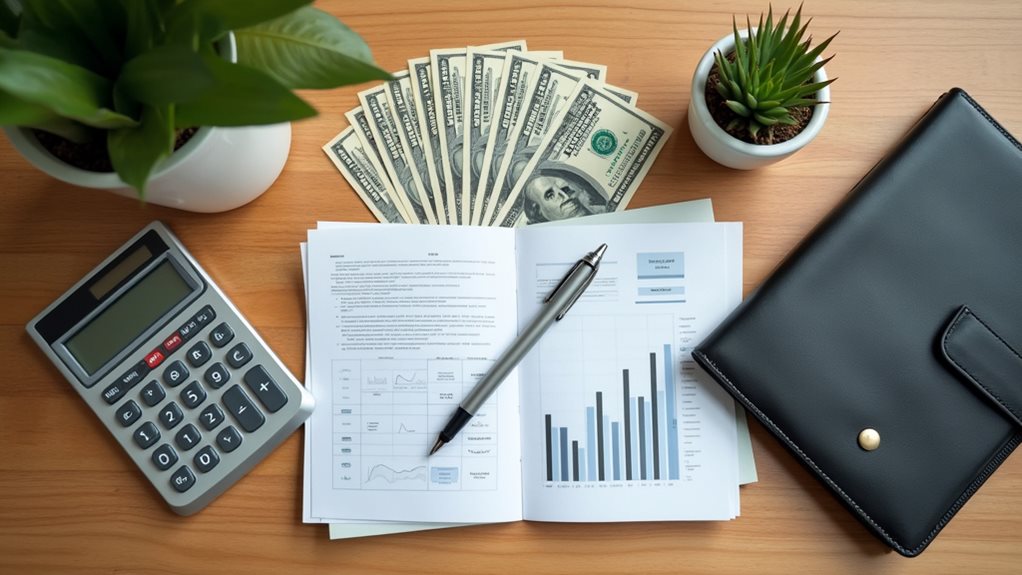
Since your business plan will fundamentally become your financial roadmap through the entrepreneurial wilderness, you’ll want to approach funding with the same strategic mindset you’d use for planning a cross-country road trip—knowing your destination, calculating fuel costs, and preparing for unexpected detours along the way.
Your funding sources typically include personal savings, bank loans, and SBA-backed loans, each requiring a detailed budget that showcases your financial projections.
I’ve learned that lenders scrutinize initial costs ranging from $20,000 to $500,000, so your business plan must demonstrate clear understanding of operating expenses.
Your budget should also account for ongoing operational costs including chemical supplies, equipment maintenance, insurance, and utilities that significantly impact your monthly profitability in this service-based industry.
Don’t forget establishing an emergency fund covering three to six months of expenses—trust me, cash flow hiccups happen more often than you’d expect!

